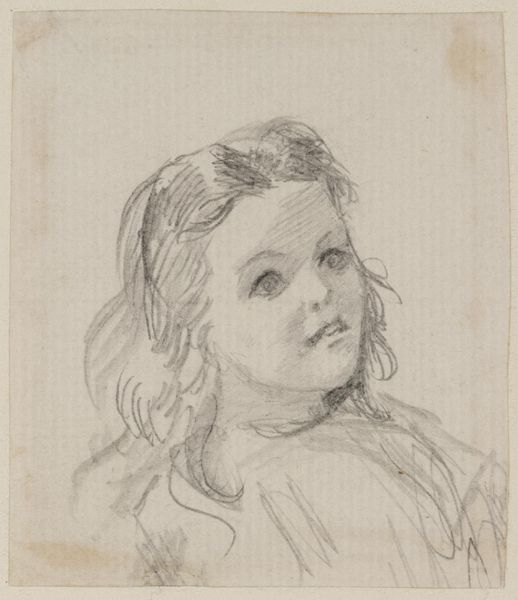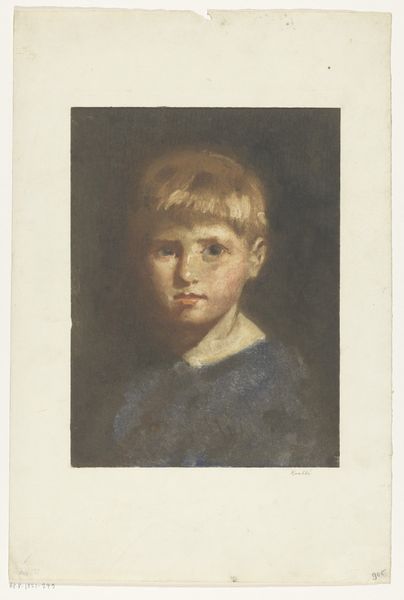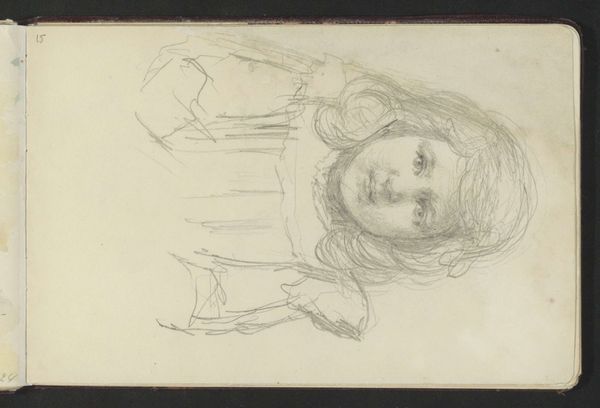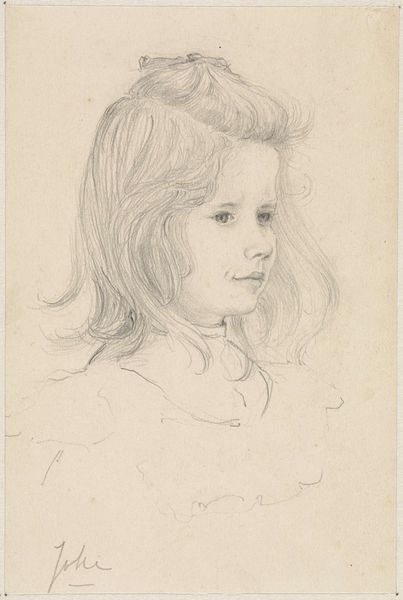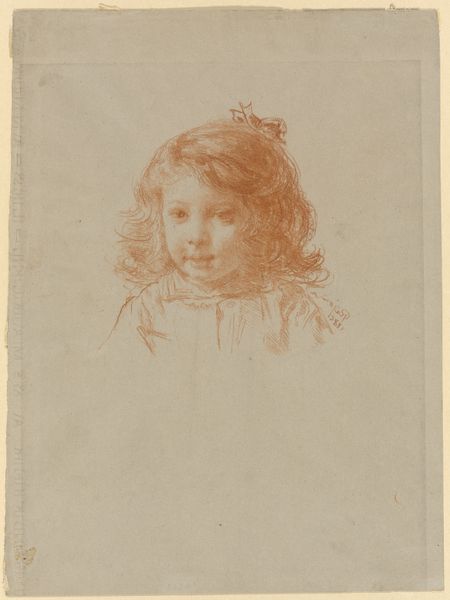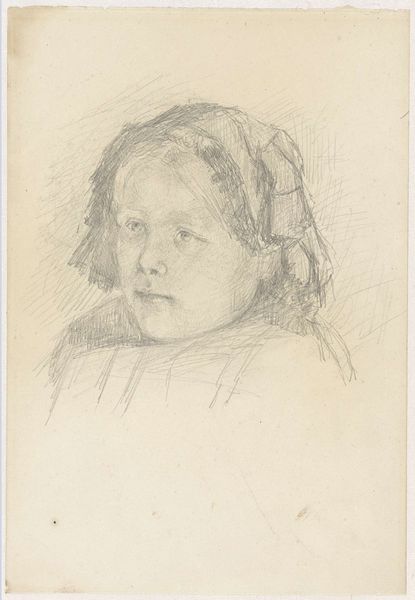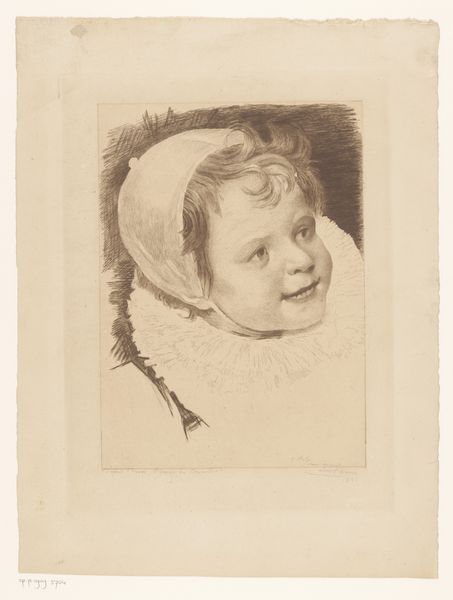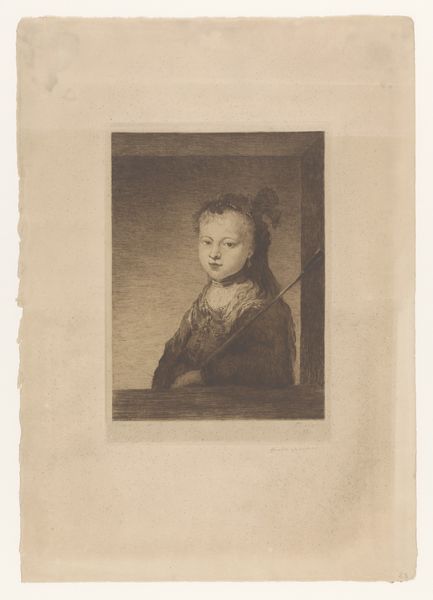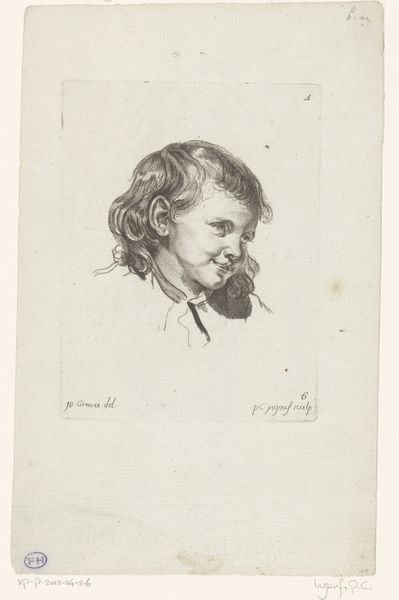
print, etching
#
portrait
# print
#
etching
#
portrait drawing
#
academic-art
#
realism
Dimensions: 244 mm (height) x 182 mm (width) (bladmaal), 200 mm (height) x 140 mm (width) (plademaal)
Curator: Here we have Carl Bloch's 1886 etching, "Portræt af Clara Emilie Rose Bloch," currently held at the SMK, the National Gallery of Denmark. What strikes you about it? Editor: It's melancholic. Even for a formal portrait, that gaze holds such quiet intensity. You sense an inner life, perhaps a child grappling with serious questions. There’s a shadow around her, literally, but also… figuratively? Curator: Precisely. Etchings like these offer fascinating insight into the intimate world of bourgeois families. Bloch, known for his religious paintings, captures a softer, familial scene here. This would have likely been a private commission. The cultural elite using art for personal purposes. Editor: And how complicit were they in enforcing Victorian ideals of childhood, of innocence? I look at her elaborate collar, that's a carefully constructed identity. Does the child truly have a space for their own desires within that visual representation? Curator: You’re right to consider the power dynamics at play. The sitter is presented with a sense of formality that suggests rigid expectations of proper behaviour. Yet, at the same time, etchings provided a new avenue for disseminating images outside the immediate family circle. It's academic realism. The detail around the face gives an accurate and well detailed impression. Editor: It makes you wonder about the distribution networks back then, the accessibility. And her gaze feels like a direct challenge. I find her simultaneously trapped and empowered. The artist's treatment and choice of shadows in particular amplifies it all. Curator: Bloch masterfully uses light and shadow to bring the figure forward. And even now it can make us think about how portraits reflected, but also shaped, social identities of women. Editor: I suppose it comes down to grappling with that tension: this representation captures a specific, likely privileged experience, but can also open avenues for empathy. What are her thoughts and fears? We can only project… but the act of asking humanizes her. Curator: Absolutely. An art object is inevitably marked by the forces that shape its creation. Reflecting on these factors opens avenues into not just a piece of art but also the very dynamics of their age. Editor: An important reminder to look closely and always question.
Comments
No comments
Be the first to comment and join the conversation on the ultimate creative platform.

